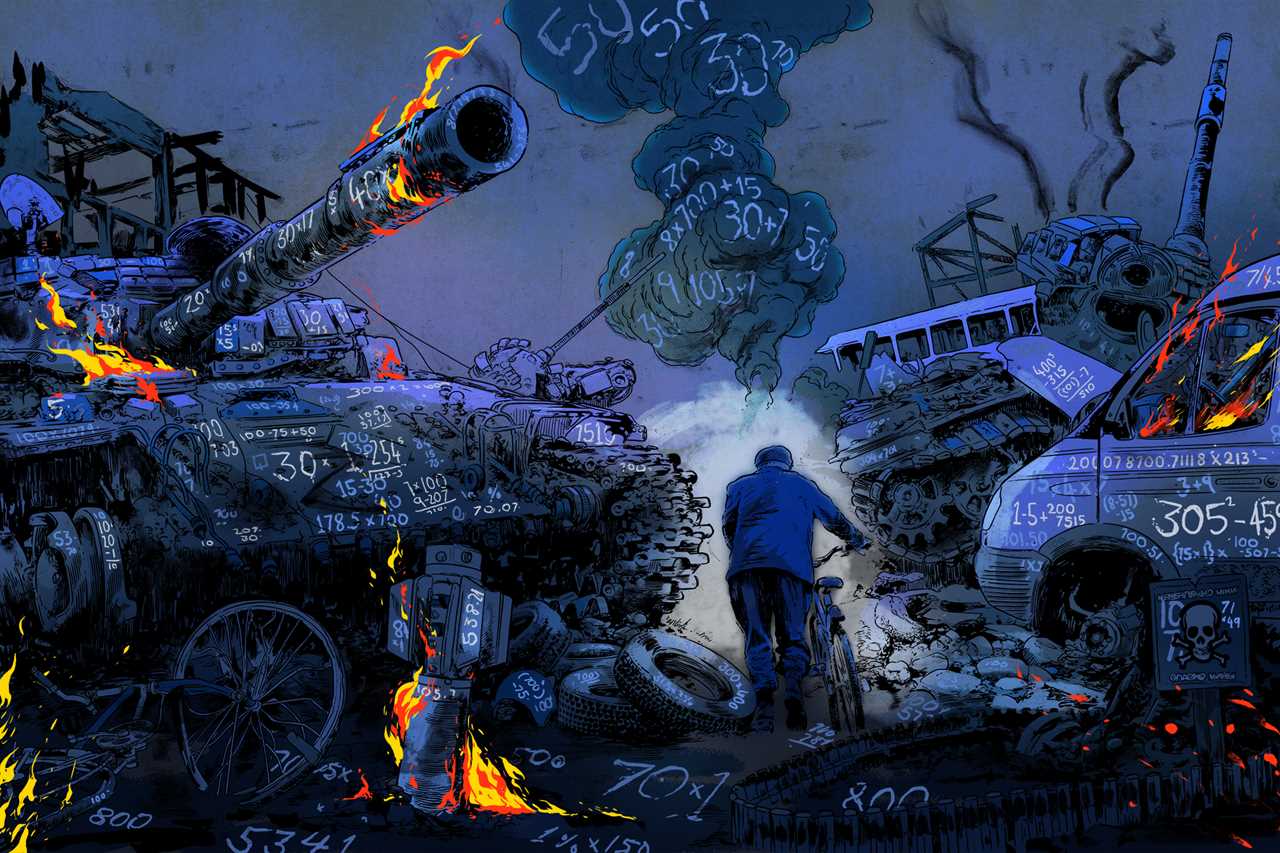
Day after day, Lennard de Klerk's home in Hungary’s sleepy countryside was filling up with Ukrainian refugees, their haggard expressions putting a literal face on the tragedy unraveling just a country away. It was March 2022, just a few weeks after Russia invaded their homeland, and de Klerk was troubled. Seeking a quiet place to think, the 50-year-old Dutch carbon expert-turned-hotelier went to swim laps in a municipal pool. “What more can I do to help Ukraine?” he asked himself. Between two strokes, an idea he liked flashed into his head: “Why don't we calculate the carbon impacts of this war?”
Putting a figure on the carbon emissions tied to Russia’s invasion might help people outside of Ukraine understand the massive stakes of the conflict and care more about it. “The human tragedy is constrained to the territory of Ukraine," he recalls thinking. “Carbon emissions are a different story; they impact everyone’s climate.”
But doing that would be no small job. Tallying an ongoing conflict’s emissions had never been done before. In fact, calculating the emissions of an entire war had been done only once — by advocates critical of fossil fuels who estimated emissions of the 1991 Gulf War. That war lasted less than six months and the calculations were done nearly two decades after the conflict had ended.
Still, de Klerk was not deterred. In a previous life, during which he had worked as a respected expert in greenhouse gas measurement, he had learned that with a bit of accounting magic, the carbon emissions of almost anything can be counted. Doing so was his hammer — the versatile tool he applied generously to myriad problems for much of his life. He had helped the Netherlands source in Ukraine some of the 100 million metric tons of carbon dioxide it purchased as offsets from foreign governments in the early 2000s, eventually running a 50-employee company dedicated to such services. When he and his husband, Jeroen, purchased a dilapidated Hungarian mansion to set up the carbon-neutral ecolodge they now run in the town of Irota, population 59, he started computing its emissions. (Negative 1,744 kilograms of carbon dioxide annually last he checked.) Ditto for a Budapest apartment he rents out. And his household.
So he messaged a handful of former colleagues, including Ukrainian climate expert Olga Gassan-zade, to enlist their support. “Do you know what the default emission factor of a cruise missile is?” he asked her. When replaying that exchange over drinks in June, Gassan-zade exploded in laughter as she recalled the timing of his outreach. “We had been out of touch for 10 years — and then there was war,” she teased. But she was on board: “Then you knew who your friends were,” she quipped.
The friends got to work tabulating and calculating the excess carbon emissions caused by the war. Their initiative is the most prominent among a number of efforts that are measuring the greenhouse gases of the conflict in Ukraine and challenging previous notions of what constitutes an injury of war.
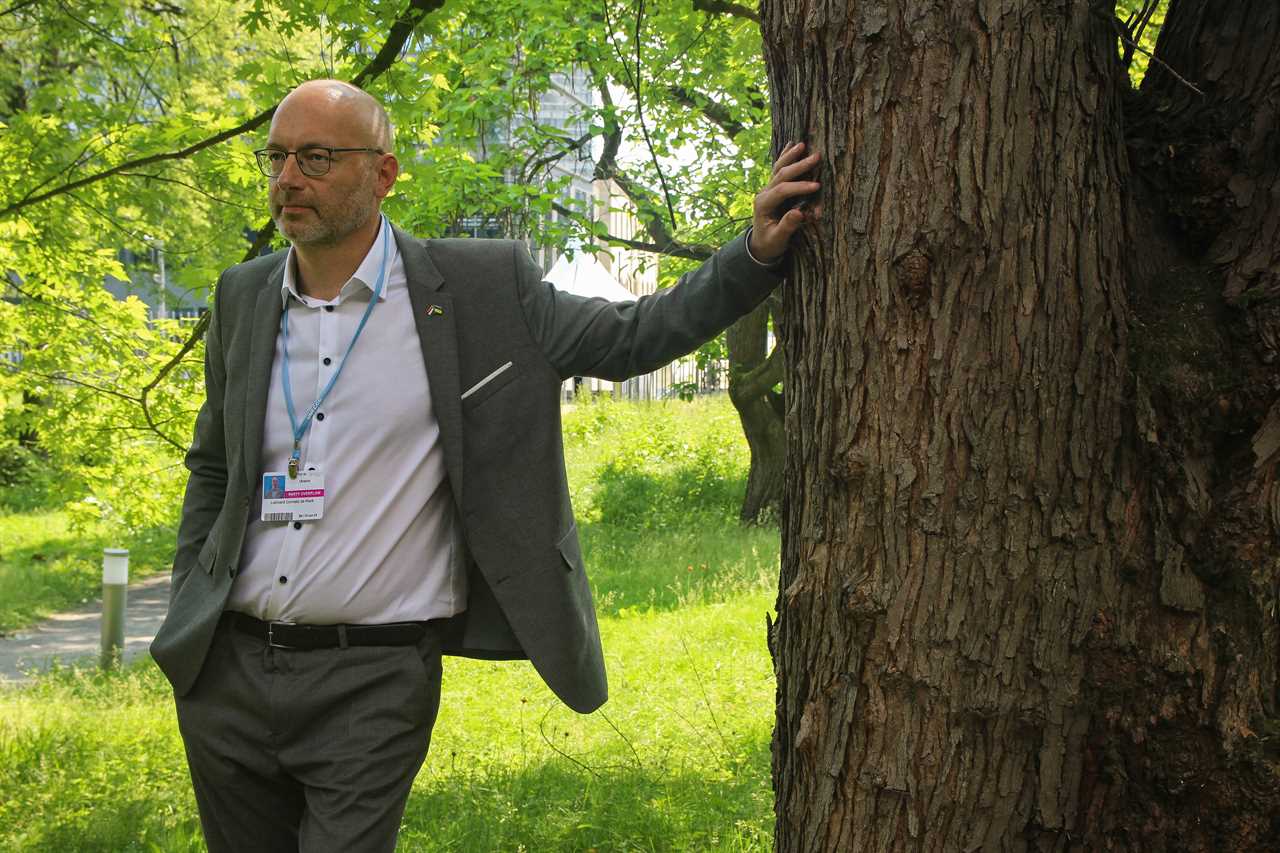
Armed with the can-do attitude of math heads, de Klerk and his friends soon found themselves grappling with a status quo they did not suspect existed. For two decades, global rules have required countries to report their annual carbon emissions, but allowed them to publicly release only limited data on their emissions from military activities. Under the 2015 Paris Agreement, nations disclose their national emissions and commit to cutting them. But drafters of the treaty's predecessor, the Kyoto Protocol, carved out reporting exemptions that cover large portions of military emissions abroad, and that loophole remains, said Axel Michaelowa, a senior researcher at the University of Zurich, in Switzerland. Yet, direct and indirect emissions of militaries might account for 5.5 percent of total global emissions, according to estimates by Scientists for Global Responsibility and the Conflict and Environment Observatory, two U.K.-based nonprofits. That’s nearly as much as the annual emissions of the world’s entire fleet of passenger cars.
The result of this loophole has been a lack of agreed-upon standards that could help carbon accountants bring some order to the climate chaos caused by an all-out war. De Klerk’s team members have employed all their ingenuity to fill that void. Since the war began, they have worked to compute emissions from all types of war-triggered emissions, from fires set off by explosives to fuel consumed by tanks and armored vehicles to the tailpipe pollution from cars driven by Ukrainians fleeing their homes — and everything in between.
Anatolii Shmurak’s is the team’s man in Kyiv and his daily routine includes collecting reports of Russian attacks from sources including social media like Telegram. He then verifies them using open-source satellite images delineating burnt areas to appraise the carbon emissions of hostilities-related wildfires. Mykola Shlapak, another team member, has also repurposed his peacetime expertise as an environmental consultant and closely tracks reports of fuel shipments to areas nearing the frontlines. Military vehicles like tanks and fighter jets, known as an armed force's “fighting tooth” in military literature, are big fuel-guzzlers. An unexpected lesson he has learned from his wartime accounting is that their fuel needs can pale compared with those of the logistical “tail” that supplies them, he said.
De Klerk’s audacious idea hasn’t been just an academic exercise. The Initiative on GHG Accounting of War, as it is now known, brings together seven experts in four countries who produce two reports a year that influence decision-making by the Ukrainian government and international organizations. Ukraine’s Ministry of Environmental Protection’s climate department, which from the war’s onset had separately been investigating war-related emissions from fires, has even adorned the team’s reports with its logo and endorsed them.

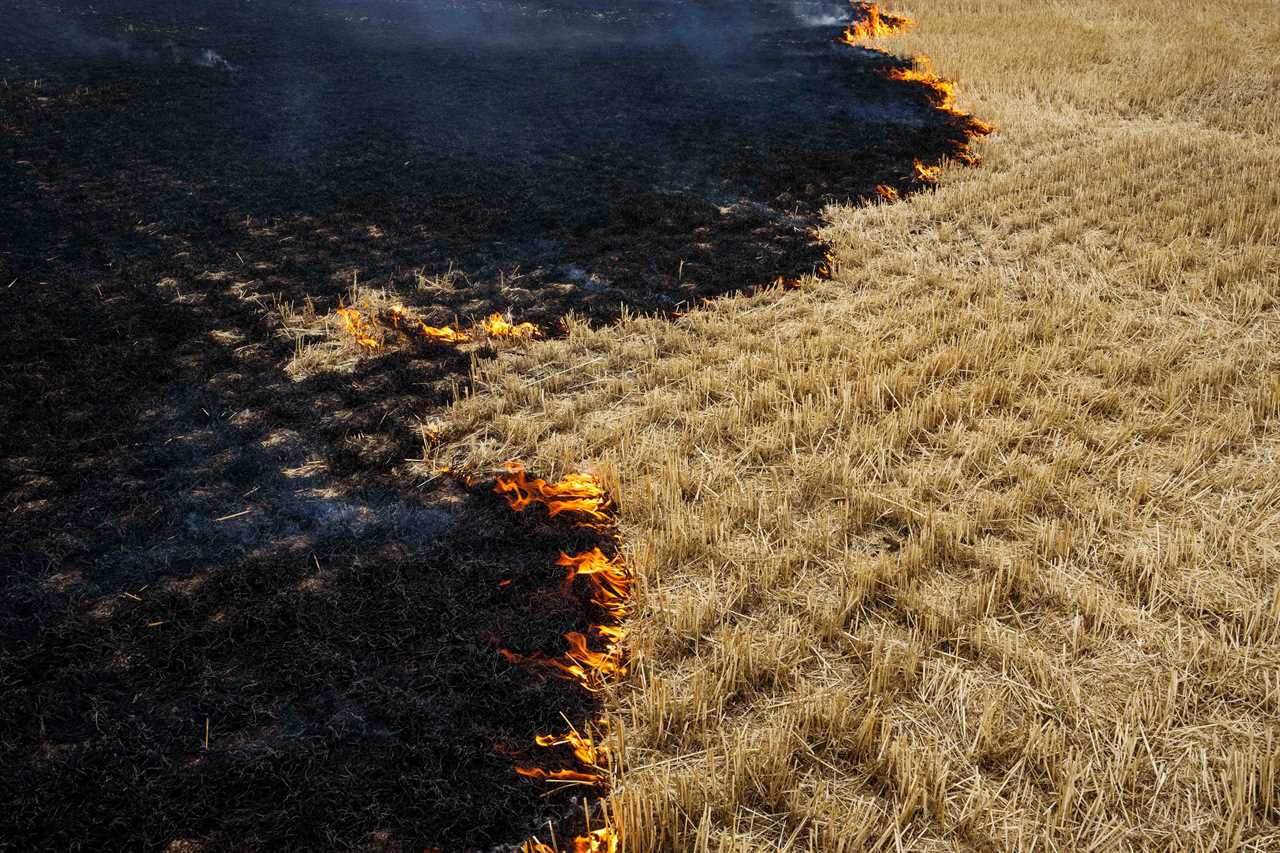
Last November, more than half a year after de Klerk daydreamed his climate accounting vision, he and his small team presented a first batch of results at a yearly United Nations climate summit held in Egypt. The findings contained in their report revealed that emissions attributable to the war’s first seven months totaled at least 100 million metric tons of carbon dioxide in direct, indirect and prospective reconstruction-related emissions. The figure is equivalent to the Netherlands’ entire emissions over the same period. A second reportreleased in June updates that figure to 120 million metric tons of carbon dioxide for the war’s first 12 months.
Everyone knows that war is destructive to humans and buildings and land and societies, usually concentrated to the combatant countries. But as the world has slowly come to terms with the planet’s warming, it’s become clear that war is also destructive to the Earth’s climate, damage that spreads to all humans and all countries regardless of their relationship to the conflict. That damage will be expensive to mitigate, and de Klerk is part of a two-part effort to first, account for the destruction and second, to hold Russia accountable for it.
But first, there’s a lot of math to do. As for cruise missiles, it turns out they emit only trace amounts of carbon dioxide when fired.
To the uninitiated, accounting can seem an exercise in monotony, one that conjures images of impenetrable Excel sheets and uninspired afternoons rather than passionate political contests. Jacob Soll, a professor at the University of Southern California who has written a best-selling book on accounting’s political history, begs to disagree.
"It helps make empires, and it often brings them down,” he told me in an interview. In “The Reckoning: Financial Accountability and the Rise and Fall of Nations,” Soll explains that “good accounting practices have produced the levels of trust necessary to found stable governments.” It is no accident savvy rulers open their account books for all to verify.
Yet the accounting of military expenditures has followed a long, separate tradition. Military expenditures “reveal secrets,” Soll said. As a result, they historically have remained off the books by authorities often citing the national interest. Eighteenth-century France offers an early example. In the lead-up to the French Revolution, the dismal state of government accounts became the focus of so much controversy that nearly a third of pamphlets argued over that question. Nothing a bit of creative accounting couldn’t fix: Then-Finance Minister Jacques Necker simply removed the military deficit from the official books. He would later explain he could not show its numbers due to the expense’s “extraordinary” nature, Soll said.
As if replaying a version of those times, when negotiators of the Kyoto Protocol sought to create loopholes for military emissions back in 1997, they cited national security concerns to make their case. Internal U.S. documents of that era, made public by George Washington University, show that the Pentagon first raised those concerns. Its leadership argued that U.S. military fuel-reduction requirements could handicap military training and operations, eventually sending representatives to diplomatic talks in Kyoto who advocated the position to allies. Diplomatic cables dating from that time warn that the European Union was “becoming rather ‘fatigued’” amid confusion about “why this issue is so important to the U.S.” Eventually, exemptions for the fuels that power military ships and aircraft on overseas missions and for military operations deemed "multilateral” were adopted. A diplomatic memo concluded it was “a major victory.”
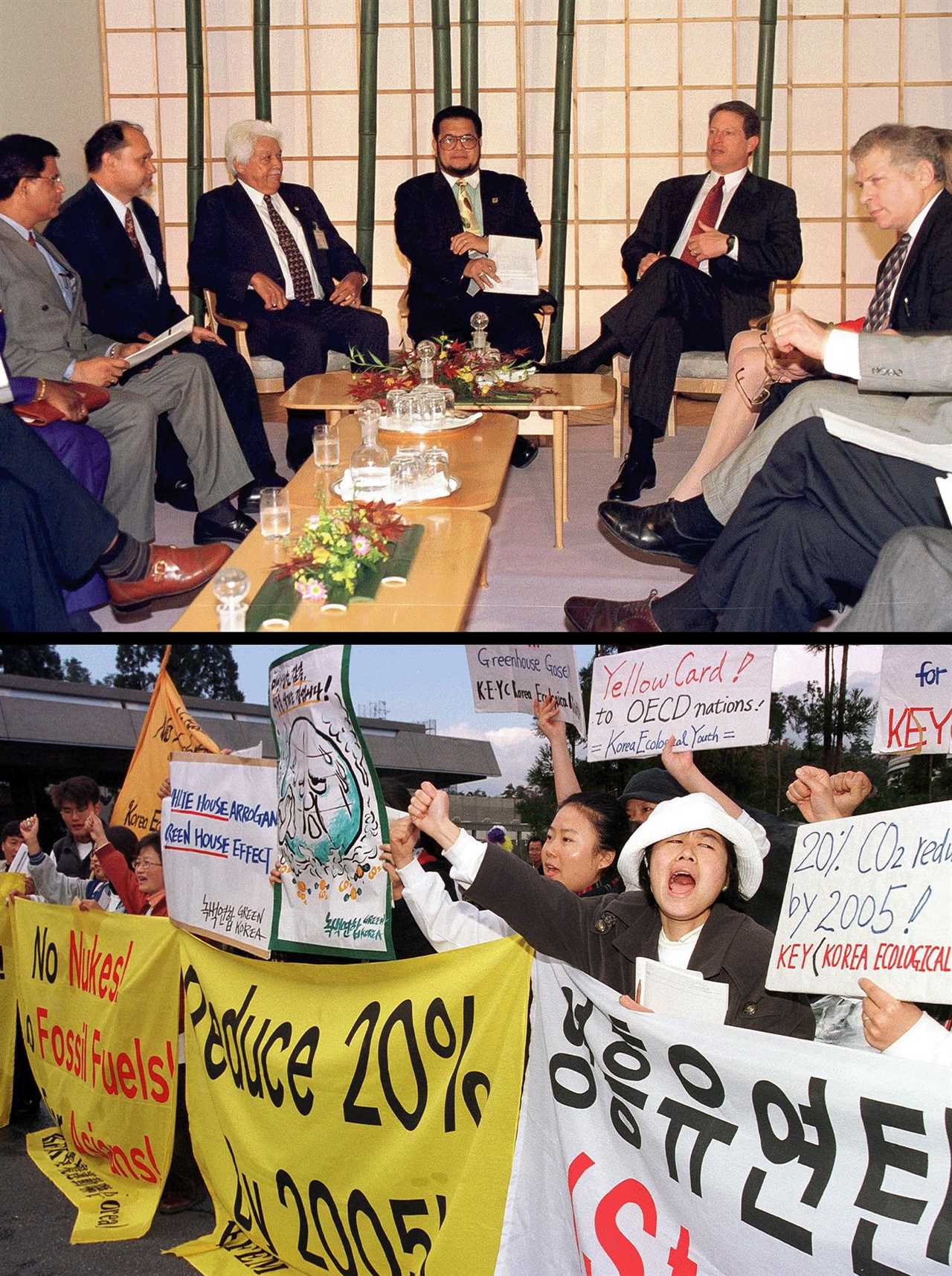
History has, of late, taken a different turn. Tara Sonenshine, a professor of practice at Tufts University’s Fletcher School of Law and Diplomacy who has written on the war’s environmental toll, says Ukraine’s emphasis on throwing light on the conflict’s emissions not only reflects a preoccupation over climate damage but also serves a second purpose: It ties Ukraine’s battle for survival to a major issue also threatening Western societies. “The Ukrainians have to constantly connect the dots to build support,” she said. The professor calls the strategy “Western values alignment.” “That includes at the top of the list, right now, climate change,” she added. Part messaging or not, Ukraine’s position has brought to the forefront a debate long overlooked.
“It is the first time that serious attention has been focused on how the war has contributed to global emissions,” said Doug Weir, who heads the Conflict and Environment Observatory.
To be sure, the war’s emissions do not command more attention in Kyiv and other capitals than its human cost. But Ukrainian officials broadcasting the findings of de Klerk and his colleagues, sometimes to great effect, have raised the issue’s profile. Speaking to diplomats at a United Nations climate change summit in Bonn this June, a Ukrainian delegate cited the findings of the “international group of experts,” as he called them, to voice accusations that Russia was harming the environment with the invasion of Ukraine. The intervention, during which the Ukrainian delegate also faulted Moscow with broader accusations over the war, prompted a stern response from Russia, whose representative objected to the “anti-Russian rhetoric.” Ukraine’s minister of Environmental Protection and Natural Resources, Ruslan Strilets, has also highlighted the findings of de Klerk and his team. In July remarks, he cited their estimate to accuse Russia of setting his country back by 120 million metric tons of carbon dioxide because of the war.
Even Ukrainian President Volodymyr Zelenskyy has had things to say about the emissions of the war. Midway through his opening speech at a November U.N. meeting in Egypt’s Sharm el-Sheikh, he invited other leaders to help Ukraine “assess the impact of military actions on (the) climate and environment.”

Zelenskyy was referring to the Ukrainian government’s effort to measure not just climate but all environmental damages caused by the hostilities. That initiative has received the backing of a high-profile cast, including Greta Thunberg, the youth climate activist, and Mary Robinson, a former president of Ireland. And when it comes to the conflict’s greenhouse gases, it goes a step further than that of de Klerk and his colleagues by aiming to put an actual price tag on direct ones.
It is all part of a broader push to prepare for another battle: Ukraine’s counterattack, in court, to seek monetary compensation for the damages.
Thirty-two air raid sirens wailed across Ukraine and missiles hit a residential building in the southern city of Odesa on the hot, sun-drenched July day last year when Mykhailo Savenets, a good-natured, 31-year-old meteorologist in Kyiv, took a decisive step in the effort to calculate the war’s damages. On that day, he introduced his colleagues at Ukraine’s State Environmental Inspectorate to a formula with which they could estimate the greenhouse gases of the war. The move could alter what it means to suffer compensable war damages. But Savenets recalls it as a simple matter of scientific logic that required only a little discussion: All are experts who work pro bono on estimating the war’s air pollution value for the government body.
The experts were meeting, on Zoom, to decide which air pollutants’ emissions they would help measure. Under a ministerial decree signed less than a month into the war, dozens of experts like them were asked to come up with “methods” to value the war’s damages, environmental and not. (The temporary methodologies adopted early in the war exclude greenhouse gas emissions, but they will be updated.)
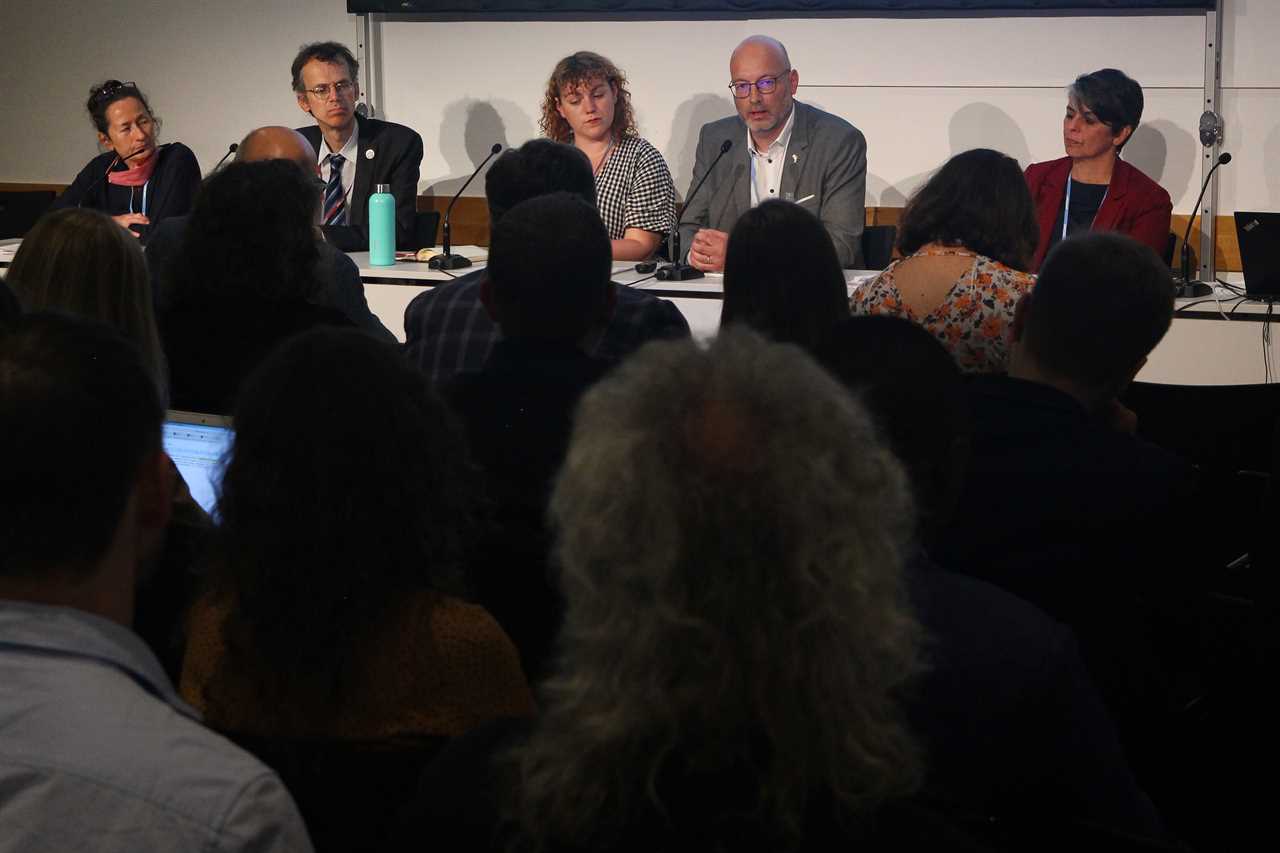
The mathematical rendition of Savenets’ formula is deceptively dry:
C(loss) = EMGH x CT x Kl x Kf
(where C(loss) is the cost of greenhouse gases, like carbon dioxide; EMGH is the mass of emitted greenhouse gases; CT is the value of carbon taxes, and Kl and Kf are coefficients that measure the emission’s negative impacts)
It can be translated to this: To put a price on the war’s emissions, take the mass of a fuel whose burning generates emissions (such as the known volume of fuel stored in a tank hit by an airstrike); multiply it by the value of Ukraine’s carbon tax; and again by a few more coefficients like one correcting for the duration of the war, and you get a total figure in Ukrainian hryvnia.
Apply the draft formula to real life, and it tells a crushing story. Take the shelling, in the northern city of Chernihiv, of a 5,000-cubic-meter oil tank containing diesel fuel on March 3, 2022, and you get one large and surprisingly precise estimate: it caused the release of 4,531 metric tons of carbon dioxide worth 1.1 million hryvnias, about $30,000. Or consider wildfires that raged near the frontlines in the Kyiv region on March 28, 2022, about a month into Russia’s invasion of Ukraine. That attack is estimated to have burned about 24,430 hectares, causing the emission of 235,161 metric tons of carbon dioxide valued at 58.2 million hyrvnias, about $1.5 million.

In contrast to de Klerk’s initiative, the State Environmental Inspectorate’s methodology isn’t designed to tally indirect emissions like those from the displacement of Ukrainian victims of the war. Neither does it account for prospective emissions from the eventual reconstruction. Rather, for now, the draft methods will inventory emissions from only hostilities-related wildfires, damages to industrial facilities and fuel consumption by military equipment — and nothing else. (The methods might be expanded in the future, for instance, to include emissions from infrastructure fires). It’s the difference between making scientifically sound estimations — the Initiative on GHG Accounting of War’s present domain — and only collecting data that will meet a particular legal threshold and withstand the scrutiny of a judge picking them apart during a court case. The draft methods of the State Environmental Inspectorate of Ukraine are meant to fulfill the latter goal. They will, therefore, measure only those direct greenhouse gas emissions that can be calculated “precisely” and with what information is currently available, said Andrii Moroz, a lawyer who is advising the State Environmental Inspectorate.
For instance, wildfires from shelling often must meet criteria that ensure they aren’t naturally occurring. An atypically shaped blaze that follows a streak-line pattern characteristic of shelling, for instance, is a sign that it has not occurred randomly but is due to “anthropogenic influence,” as Savenets sometimes calls acts of war out of scientific habit. Meanwhile, the destruction of industrial property, say a pipeline or a power plant, must be formally attributed to Russian troops by official bodies like the State Emergency Service of Ukraine or the State Environmental Inspectorate of Ukraine, in order to attribute those emissions to Russia.
Alina Sokolenko, a sustainability expert who analyzes the legal questions arising from the war’s environmental damages for Ukraine’s State Environmental Inspectorate, sums it up this way: “It's not only a matter of how to measure, but [also] how to prove and how to receive compensation for these losses.”
Should Ukraine go ahead with claims for greenhouse gas emissions, it would mark the first time a country seeks compensation for such damages resulting from an all-out war, Rutgers Law School professor Cymie Payne, an expert on international environmental reparations, told me. “It would push our understanding of the harms of war to the environment in new directions.”
The road to compensation would likely follow the usual legal procedures. First, the plaintiff — Ukraine — would have to show that it was injured because the defendant — Russia — broke the law. It would then have to show the extent and kind of harm it suffered, and also that the law is one that requires compensation.
Yes, the climate claims would be a long shot, largely because it will not be easy for the plaintiffs to establish that the greenhouse gases have caused Ukraine harm that is specific enough to be compensated. Still, Ukrainian experts point to a relevant precedent in international courts where a handful of lawsuits have resulted in the awarding of environmental damages from cross-border conflict. In the foremost of these cases, Kuwait accused Iraq of breaching the international law doctrine prohibiting unprovoked attacks when it spilled massive amounts of oil across the Kuwaiti desert during the Gulf War of the early 1990s. The United Nations Compensation Commission awarded Kuwait about $3 billion in monetary compensation just for those claims. In 2018, the International Court of Justice ruled that Nicaragua had to pay Costa Rica","_id":"0000018a-518f-d0b1-a7eb-57df68960000","_type":"02ec1f82-5e56-3b8c-af6e-6fc7c8772266"}">had to pay Costa Rica a few hundred thousand dollars in environmental compensation for illegally dredging a canal that damaged its wetlands.
Karen Hulme, at the University of Essex School of Law, thinks one possible, but never-before-tested path that Ukraine could take to make its claims would involve arguing that, like with Iraq, Russia’s invasion constitutes a breach of the prohibition on states to use unprovoked force against one another. That doctrine is enshrined in the United Nations Charter. Ukraine would need to further argue that Russia must make amends for all the resulting damage to the climate with monetary damages. Alternative arguments could claim breaches of the global climate rules tied to the United Nations Framework Convention on Climate Change, or of states’ duty to prevent significant transboundary environmental damage, a doctrine of international law, Hulme said. “It is so far unprecedented in international law for greenhouse gas emissions to qualify as damage in such claims,” she warned. “And so there would be many legal hurdles to pass."
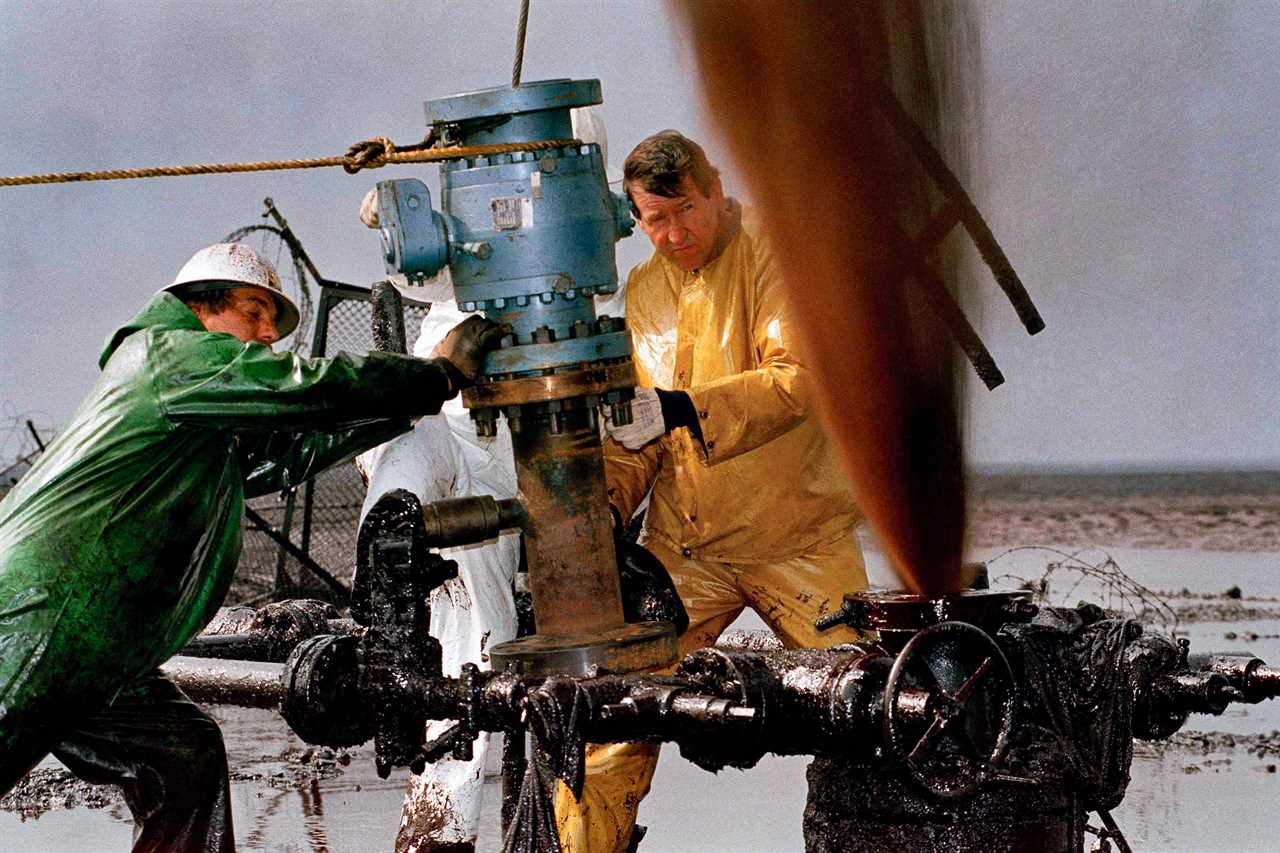
The venue where such claims and more conventional ones could be filed is already being set up in The Hague. In a May decision by the Committee of Ministers of the Council of Europe, some 40 countries established a so-called register of damage whose mission is to “serve as a record … of evidence and claims information on damage, loss or injury” caused by Russian troops after the Feb. 24, 2022 invasion. The body is intended to be “the first component” of a future, fuller legal body whose main arm will be a “claims commission,” its founding document says. Its board will eventually determine categories of eligible claims. Markiyan Kliuchkovskyi, its executive director, told me that claims for greenhouse gases emitted in Ukraine due to the invasion “could, in principle, be submitted to and recorded in the register.”
How payments for any war-related award would be made is its own thorny issue. Leaders of G-7 countries have taken a hard line on the matter, declaring at their yearly summit in May that Russian sovereign assets they have “immobilized” would remain so “until Russia pays for the damage it has caused to Ukraine.” So far, G-7 countries, together with Australia and the European Commission, have frozen some $300 billion of Russian Central Bank assets and $58 billion worth of sanctioned Russians’ assets, according to research by the Atlantic Council, a Washington, D.C., think tank. For reference, Ukraine puts the war’s environmental damages at about only $57 billion. The total excludes greenhouse emissions, whose price cannot be appraised until Kyiv adopts a final accounting formula.
For now, Ukrainians are trying to avoid the mistakes of the past. A June 2022 State Environmental Inspectorate report that goes over lessons learned from the Iraqi and Nicaraguan cases says good accounting is a must. “The key success factors are the ability to measure the amount of environmental damage and to prove the cause-and-effect relationship between the actions of the aggressor and the environmental damage caused,” it reads. And so Ukrainian authorities will continue to turn the ravages of the war into data that does just that.
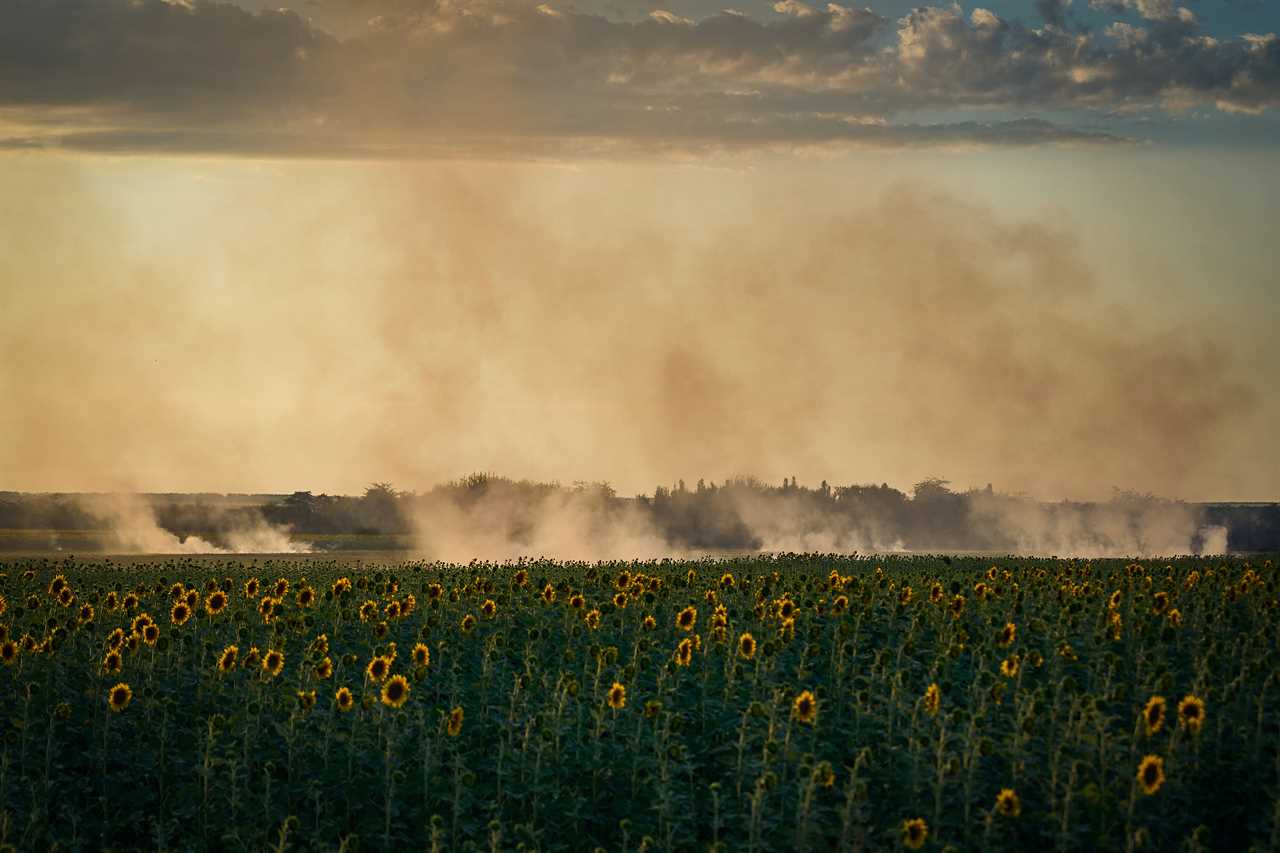
In written remarks, Strilets, the Ukraine minister of Environmental Protection and Natural Resources, made sure to connect the dots between climate and the war. Any compensation for the war’s environmental damages would finance a “green reconstruction” and Ukraine’s "transition to a carbon-free economy,” the minister said. “Everyone knows the ‘polluter pays’ principle! We propose to introduce the new principle — ‘aggressor pays’,” he added. “After all, the war in Ukraine is not the last war in the world’s history, but if ‘the aggressor pays’ principle works, there is a chance that everyone will understand that waging war is costly.”
As for de Klerk, today, he is typing away at his ecolodge reception desk, his usual workstation. He is laboring on the next iteration of his report, due to be unveiled in December. In addition to updating the account to include the war’s longer timeframe, it’s also expected to be a deep dive into how best to bring about climate damage litigation.
“Registering the damage that’s been done through the additional emissions is one [goal],” he says, “but in the end, you want to get compensated for it.”
----------------------------------------
By: Sebastien Malo
Title: Another Russian War Crime: Climate Destruction
Sourced From: www.politico.com/news/magazine/2023/09/03/ukraine-russia-invasion-carbon-footprint-00111652
Published Date: Sun, 03 Sep 2023 06:00:00 EST
Did you miss our previous article...
https://consumernewsnetwork.com/politics-us/newsom-embraces-dirty-energies-in-bid-to-prevent-blackouts






